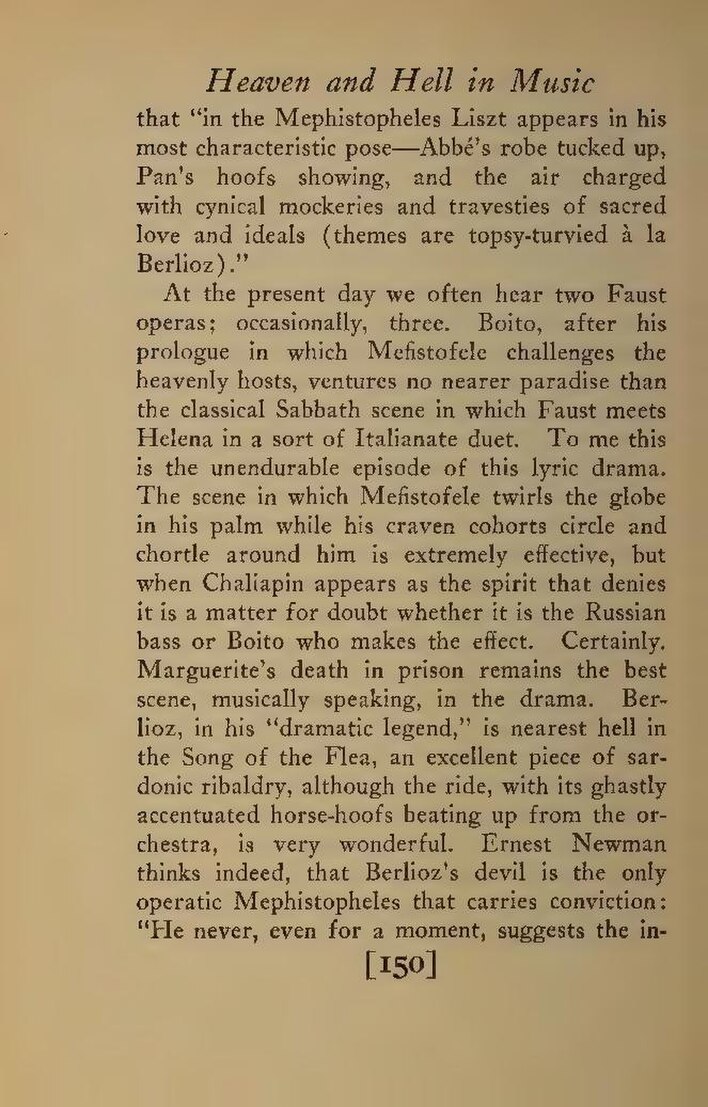that "in the Mephistopheles Liszt appears in his most characteristic pose—Abbé's robe tucked up, Pan's hoofs showing, and the air charged with cynical mockeries and travesties of sacred love and ideals (themes are topsy-turvied à la Berlioz)."
At the present day we often hear two Faust operas; occasionally, three. Boito, after his prologue in which Mefistofele challenges the heavenly hosts, ventures no nearer paradise than the classical Sabbath scene in which Faust meets Helena in a sort of Italianate duet. To me this is the unendurable episode of this lyric drama. The scene in which Mefistofele twirls the globe in his palm while his craven cohorts circle and chortle around him is extremely effective, but when Chaliapin appears as the spirit that denies it is a matter for doubt whether it is the Russian bass or Boito who makes the effect. Certainly. Marguerite's death in prison remains the best scene, musically speaking, in the drama. Berlioz, in his "dramatic legend," is nearest hell in the Song of the Flea, an excellent piece of sardonic ribaldry, although the ride, with its ghastly accentuated horse-hoofs beating up from the orchestra, is very wonderful. Ernest Newman thinks indeed, that Berlioz's devil is the only operatic Mephistopheles that carries conviction: "He never, even for a moment, suggests the in-
